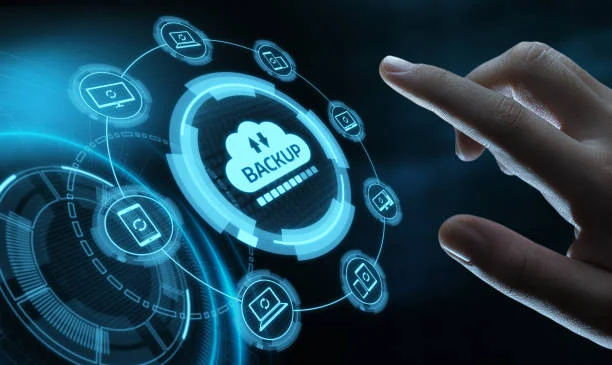If you’ve set up data backups for your business, you’ve taken a crucial first step toward data protection. It feels like a safety net, a reliable Plan B for when things go wrong. But what if that safety net has gaping holes you can’t see?
The alarming truth is that for many businesses, backups provide a false sense of security, failing precisely when they are needed most. This isn’t a rare occurrence. Consider this as per Cybercrime Magazine: 66% of companies that experience prolonged data loss of ten days or more go bankrupt within a year. The assumption that a backup automatically translates to business survival is a dangerous one.
This gap between simply having data and being able to use it to run your business is where catastrophic failures occur. Moving beyond isolated backups requires a proactive and layered approach that integrates continuous monitoring, incident response planning, and a deep understanding of your unique operational needs. Building a truly resilient plan with comprehensive cybersecurity services is the foundational step to ensuring your business can survive and thrive after a disruption.
This article will reveal why relying solely on backups is a perilous strategy and outline the essential components of a robust recovery plan that actually works.
Key Takeaways
- Backups are a critical component, but not a complete solution, for business continuity and disaster recovery.
- The difference between backup, disaster recovery, and business continuity determines your business’s ability to operate after an incident.
- Modern cyber threats like ransomware can compromise backups themselves, rendering them useless without additional security layers.
- A truly resilient strategy requires defining your Recovery Point Objective (RPO) and Recovery Time Objective (RTO), alongside implementing a layered approach that includes regular testing and cybersecurity awareness.
Featured Post highlights proven approaches to safeguard your data and continuity.
The Dangerous Illusion: Why Backups Alone Are Not Enough
The idea of a backup is simple: a copy of your data stored somewhere safe. Yet, the process of recovering from that backup is fraught with complexity and potential failure points that many businesses overlook until it’s too late.
Here’s where the illusion of safety shatters:
- Backups often fail. A backup job might complete with an error that goes unnoticed, or the data could become corrupted over time. When you need it most, you may discover the files are unreadable or incomplete.
- Recovery is more than just files. A backup restores data, but it doesn’t automatically restore your operations. Your servers, applications, network configurations, and user settings need to be rebuilt. Restoring files is one step; restoring a functional IT environment is another challenge entirely.
- Human error is a constant threat. Data loss isn’t always caused by a massive disaster. In fact, one study from the CFI Education found that users have experienced data loss, most often due to accidental deletion or device failure. Your backup plan must account for small-scale, everyday mistakes.
- Backups can be outdated. How much data can your business afford to lose? If your last successful backup was 24 hours ago, you’ve lost an entire day of work, transactions, and customer interactions. For many businesses, this is an unacceptable loss.
- Access and speed are critical. Even if a backup is perfect, the time it takes to restore terabytes of data can be crippling. Every hour of downtime means lost revenue, frustrated customers, and mounting operational costs.
Beyond Backups: Understanding the Crucial Differences
To build a truly resilient business, it’s essential to understand that “backup” is just one piece of a much larger puzzle. The terms Backup, Disaster Recovery (DR), and Business Continuity (BC) are often used interchangeably, but they represent distinct, layered concepts. Moving beyond basic data protection to a full managed IT and cybersecurity strategy—including proactive threat monitoring, risk management, and IT infrastructure oversight—ensures your organization stays secure and operational under any scenario. You can know more about how these services help businesses safeguard systems, streamline operations, and maintain continuity in today’s evolving digital environment.
- Data Backup: Data backups is the process of creating a copy of data. Its sole purpose is to restore files or data sets if they are lost or corrupted. It answers the question, “Do we have a copy of our data?”
- Disaster Recovery (DR): Data backups is a documented, structured plan for restoring your IT infrastructure and operations after a disaster. It uses backups as a tool but also includes plans for servers, networks, and applications. It answers the question, “How do we get our technology back online?”
- Business Continuity (BC): Data backups is the most comprehensive strategy. It focuses on keeping critical business functions running during and after a disaster. It encompasses technology (DR), but also people, processes, and communication. It answers the question, “How does our business continue to operate and serve customers?”
| Concept | Primary Goal | Scope | Key Outcome |
|---|---|---|---|
| Data Backup | Data restoration | Copies of files, databases, and systems | Data is recoverable |
| Disaster Recovery | Minimize IT downtime | Entire IT infrastructure (servers, networks) | Technology is operational |
| Business Continuity | Maintain business operations | Entire organization (people, processes, technology) | The business survives |
The Real Costs of Inadequate Recovery: More Than Just Lost Files
When a recovery plan is insufficient, the consequences extend far beyond the missing data. The financial and operational fallout can be devastating, creating a ripple effect that impacts every corner of the organization.
- Direct Financial Impact: The costs add up quickly. According to IBM’s recent data, the global average cost of a data breach is $4.9 million, a figure that continues to climb. This includes expenses for investigation, remediation, and victim notification.
- Operational Downtime: For every hour your systems are down, your business is bleeding money. Employees can’t work, production halts, sales calls stop, and you can’t deliver services to your customers.
- Reputational Damage: Trust is hard to win and easy to lose. A significant data breach or prolonged outage can permanently damage your brand’s reputation, making customers question your reliability and competency.
- Regulatory Penalties: For businesses in regulated industries like healthcare (HIPAA) or finance, data loss can lead to severe fines and legal action for non-compliance.
- Competitive Disadvantage: While you’re struggling to recover, your competitors are not. A lengthy outage can drive your frustrated customers directly into the arms of a competitor who can provide uninterrupted service.
Modern Threats: When Backups Themselves Become Targets
In the past, backups were a reliable defense against threats like hardware failure or natural disasters. Today, the threat landscape has evolved. Cybercriminals know that backups are your last line of defense, and they are actively targeting them.
- Ransomware’s Reach: Modern ransomware strains are designed to be stealthy. They often infiltrate a network and spread silently, seeking out and encrypting or deleting backups before locking down primary systems. This tactic removes your ability to recover, increasing the pressure to pay the ransom.
- Cloud Backup Vulnerabilities: The cloud is not a magic bullet. As one report notes, cloud service attacks increased 26% last year, with attackers often using legitimate, stolen credentials to access and delete cloud-based backups.
- Insider Threats: A disgruntled employee or a careless team member with administrative access can intentionally or accidentally delete backup repositories, leaving the entire organization exposed.
- Advanced Persistent Threats (APTs): Sophisticated attackers can remain undetected in a network for weeks or months. During this time, they can slowly corrupt backups, ensuring that when you finally need to restore, you’re only restoring infected or useless data.
To counter these threats, businesses must adopt advanced strategies like immutable backups—data copies that cannot be altered or deleted for a set period, creating a tamper-proof version for recovery.
Defining True Recovery: RPO, RTO, and What They Mean for Your Business
A generic promise of “we’ll get it back” isn’t a recovery plan. A real strategy is built on precise, measurable objectives that align with your business needs. Two of the most critical metrics are the Recovery Point Objective (RPO) and the Recovery Time Objective (RTO).
- Recovery Point Objective (RPO): This defines the maximum amount of data your business can tolerate losing. It’s measured in time. An RPO of 1 hour means you need backups that are, at most, one hour old. This metric determines your backup frequency.
- Recovery Time Objective (RTO): This defines the maximum amount of time your business can tolerate being down after a disaster. An RTO of 4 hours means all critical systems must be back online within that timeframe. This metric dictates the sophistication of your recovery infrastructure.
Aligning your RPO and RTO with business needs is essential. A customer-facing e-commerce site might require an RPO and RTO of minutes, while an internal development server might tolerate 24 hours. Defining these objectives is the first step toward building a recovery plan that meets real-world expectations.
Discover essential insights in our Related Post to strengthen your business strategy.






